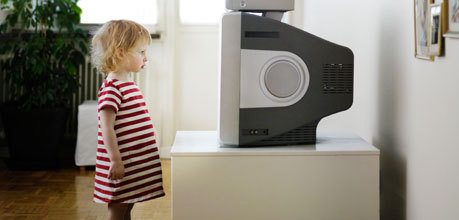If your family is anything like mine you have a good deal of lore and uncertainty about where your ancestors come from. You might have a strong idea about some of your ancestors, e.g. your great grandmother on one side emigrated from Italy, but there are probably other lines that peter out into the obscurity of time. With the birth of our first child my wife and I thought it might be fun to get our DNA sequenced, both to better understand our son’s heritage and to identify any risks lurking in the recessive recesses of our genetic codes. It turned out to be quite illuminating.
We both signed up to have our DNA sequenced by a company called 23andMe. Co-founded and run by Anne Wojcicki, wife of Google Co-founder Sergey Brin, the company aims rather loftily to achieve breakthroughs in the genetics of human health by creating a vast database of genetic information from its customers and then cross-referencing that database against the health history of people that choose to opt into the company’s genetic research (you can opt out of the company’s database if you’re worried about running into your evil clone). The company essentially harnesses the power of crowd sourcing for genetic research.
Of more immediate interest to me when I signed up, they provide personalized gene scans of certain relatively well-understood parts of the genome in order to provide each customer with an individualized assessment of his or her ancestry and health risks. The cost of this service is $99 / person. Once you sign up the rest is easy. The company sends you a tube to fill up with your spit, which you seal and mail back to their lab, and after about a month they send you an email that your results are in. You are prompted to create a login to the company’s website, which you can then access on an unlimited basis to view your results.
Your results come in two broad categories: ancestry and health. The ancestry side is the fun part. I knew my family was mostly European, but there were tales about certain parts of my heritage that I wanted to confirm or deny. For instance, because of my maternal grandfather’s dark complexion and his grandfather’s work on Indian reservations, we always speculated that we had some Native American ancestry. We also speculated that we were part Jewish because my maternal great grandfather had a Jewish surname, though he was not known to ever practice the religion. I was hoping both would turn out to be true.
The family lore was half right. After logging into the website I clicked on the link to ancestry composition. My composition came back 99.5% European (the other 0.5% was unassigned), which breaks out as follows:
British and Irish: 11.9%
French and German: 1.5%
Nonspecific Northern European: 48.4%
Ashkenazi (Jewish): 11.7%
Nonspecific Southern European: 0.5%
Nonspecific European: 25.6%
So we were right about the Jewish ancestor, but wrong about the Native American. I was a bit disappointed with how much of it came out as “nonspecific,” which is of course not very illuminating. But it’s not too surprising. 23andMe aims to tell you where your ancestors were roughly 500 years ago, before intercontinental travel became common. But even 500 years ago travel within Europe was common enough to make it hard to parse out which specific country people came from. On the other hand I was pleasantly surprised with how much they can tell you. For instance they can tell you your percentage of Neanderthal DNA. I came in at 3%, which puts me in the 92nd percentile. My wife says that explains a lot.
The more sober side of the results is your health risks. With varying degrees of confidence they can tell you your risk factor for a number of diseases. None of it is presented as a certainty, but rather as a lifetime percentage risk. For instance, you might be told that you have a 47% chance of acquiring a certain disease over the course of your lifetime, whereas the average person has only a 23% chance of acquiring that disease. It can also tell if you are a recessive carrier of certain genetic diseases such as Cystic Fibrosis, which only expresses if a child inherits the harmful variant on both sides. Perhaps most usefully, it tells you your likely response to certain drugs. I was happy to learn that I am a “fast metabolizer” of caffeine. Given that my blood is often equal parts hemoglobin and coffee, I found that reassuring.
Some people might find the health results frightening, but I took the attitude that it was better to have advance warning of potential issues when there is still time to do something about it than to blindly hope for the best. That said, 23andMe is careful to disclose that much of the genetic research they rely on is of a preliminary nature. In other words, you shouldn’t make major life decisions based on preliminary genetic testing results without seeking actual medical advice and further testing.
All in all I’m happy my wife and I did the test. It gives us something more to tell our son about his forbears, and it gave us some interesting insights into our health. It won’t tell you everything, and it’s not as detailed as I would like, but for $99 it tells you a lot. I would recommend the service to anyone that has an interest in their heritage, anxiety about their health risks, or both. The fact you might play a small part in helping advance genetic research is icing on the cake. As an armchair science geek I find that pretty cool. I also find it cool that I feel more legitimate saying “L’Chaim!”





You can also get a “second opinion” by running your 23andMe data through our Promethease program, which is connected to SNPedia, the wiki about DNA variations.